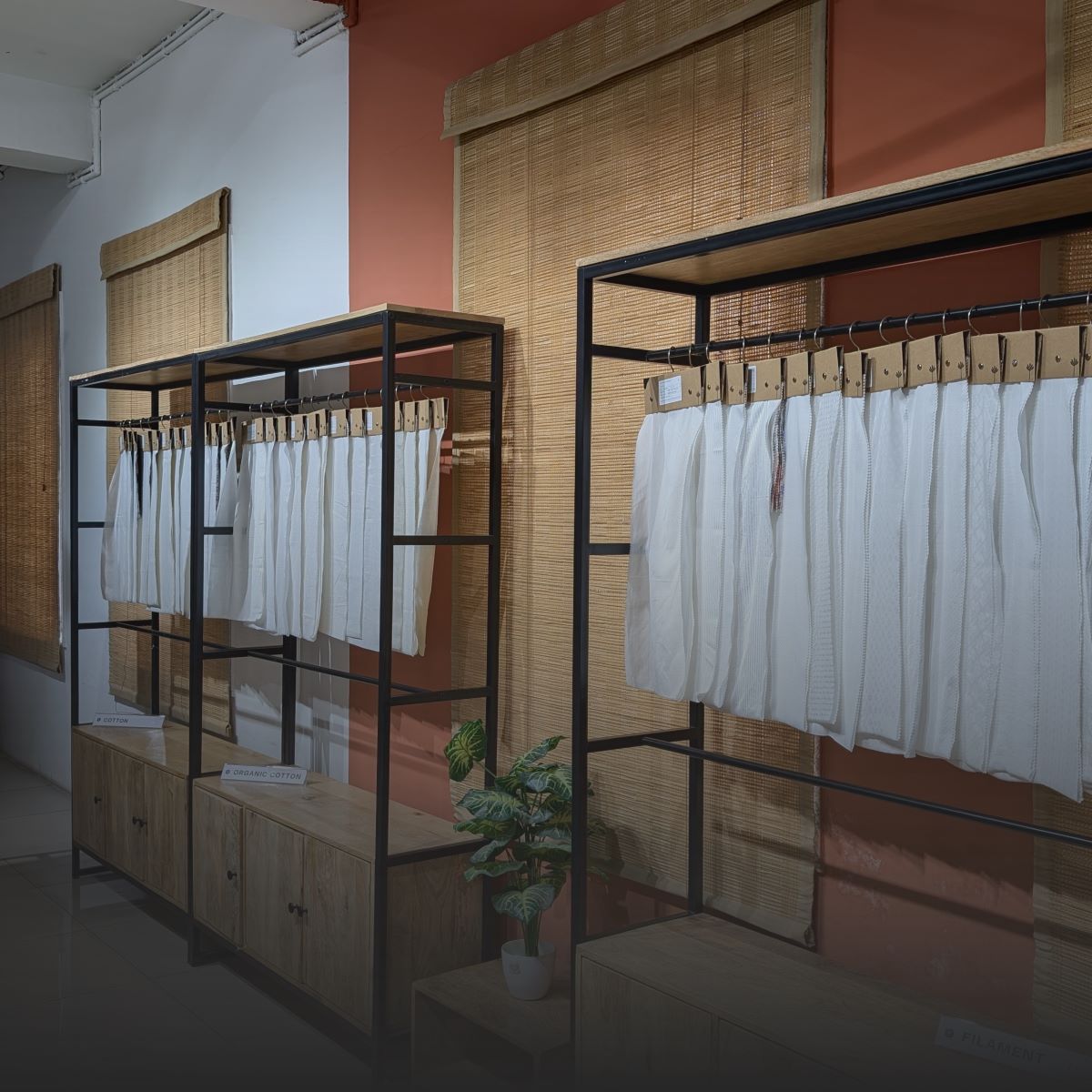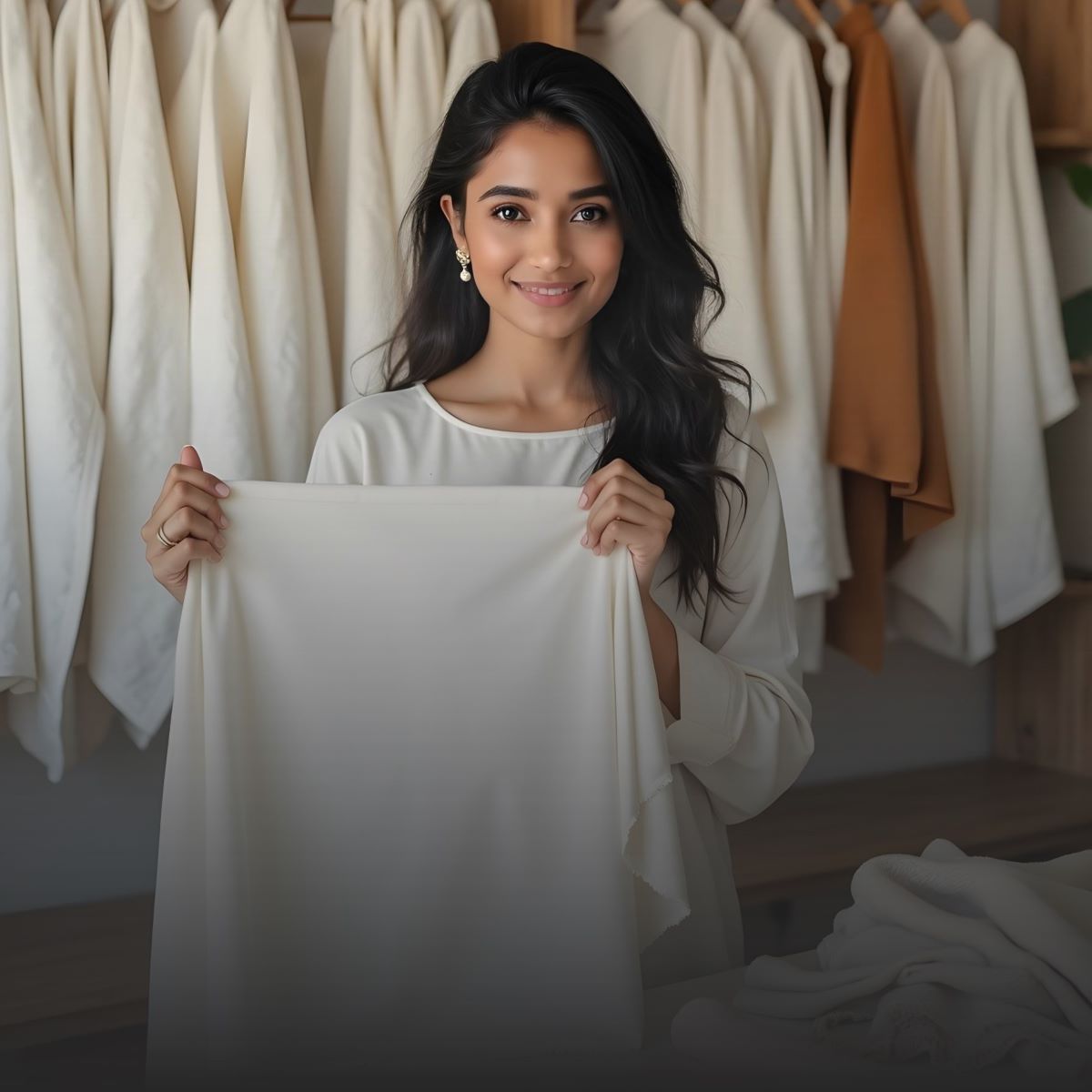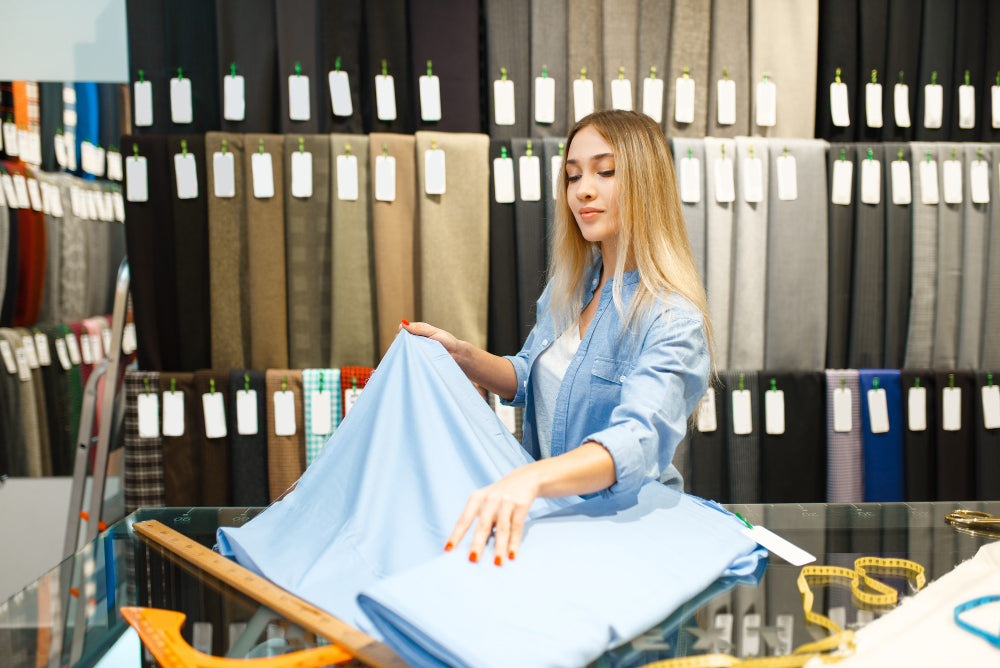Eastern Europe is emerging as a vibrant textile production hub due to its skilled workforce, advantageous location and growing focus on sustainability. Yet, traditional sourcing approaches often hold back growth, plagued by inefficiency and a lack of clarity.
B2B fabric sourcing platforms are digital marketplaces that are transforming the way manufacturers and brands obtain wholesale fabric.
These platforms have improved supply chains, lead times, and access to sustainable resources, making Eastern Europe a worldwide textile manufacturing leader. This article describes how B2B fabric sourcing platforms are changing the Eastern European textile sector and lists the top 10.
Why Eastern Europe Is Gaining Momentum In Textile Manufacturing

- Strategic Location: Countries like Romania, Bulgaria, and Poland are close to important markets and have lower shipping costs because they are between Asia and Western Europe.
- Skilled Labor: The area has a long history of making textiles, which are now made better by new training and tools.
- Demand for Sustainability: EU rules and customer demand have made companies look for environmentally friendly local providers. This has made people spend more and come up with new ideas.
- Modern Infrastructure: Investments in updating industrial buildings and bringing in new technologies have helped the region get better at making things.
- Sustainability Focus: More and more attention is being paid to ethical and environmentally friendly ways of getting that are also open and sustainable.
According to Statista (2022), Eastern Europe's textile and clothing business is worth more than $15 billion. Exports are proliferating because more people are using computers and making clothes closer to home.
How B2B Platforms Transform The Eastern European Textile Industry

The Eastern European textile and apparel sector is rapidly transforming due to digital sourcing, a strong focus on sustainability, and the emergence of agile production models. This region has transformed from relying on traditional trade fairs and slow procurement channels to leveraging innovative B2B fabric sourcing platforms that efficiently connect fabric suppliers and manage bulk fabric logistics.
These platforms connect Eastern European manufacturers with global fashion brands, providing flexible sourcing, certified materials, and quicker turnarounds.
1. Industry Growth & Digital Integration
The textile market in Eastern Europe is booming, with projections showing the European textile industry will increase from USD 116.66 billion in 2025 to USD 147.97 billion by 2030, reflecting a CAGR of 4.87%. More than 1.5 million people work in over 160,000 textile enterprises throughout the EU, with a significant number based in Eastern Europe.
As the market grows, smarter sourcing options are needed. Check out B2B sites that make it easier to find fabrics, show clear prices, make sure MOQs are clear, and enforce compliance. These are all important parts of the modern, eco-friendly fashion industry.
Essential Takeaway: According to McKinsey (2023), digital sourcing can cut the time it takes to buy something by up to 35%. This makes it easy for makers to keep up with the needs of fast fashion and capsule collections.
2. Sustainability And Verified Sourcing
Sustainability is not just a trend; it's essential. As EU regulations become stricter and consumer expectations increase, more than 40% of European buyers are now focusing on eco-certified materials such as organic cotton fabric, recycled polyester, and plant-dyed fabrics (EURATEX, 2022).
B2B sourcing platforms provide easy access to:
- GOTS- and OEKO-TEX-certified suppliers.
- Verified documentation and material traceability.
- Low-impact dyeing and sustainable fiber blends.
These digital solutions have birthed a new generation of sustainable fabric suppliers—brands that deliver innovation alongside compliance.
3. The Role Of B2B Platforms In Eastern Europe
The way people in Eastern Europe find the fabric is changing thanks to sites like Fabriclore, Manufy, and Sqetch. What do they bring to the table?
- Direct access to stocks of fabric wholesale without having to go through brokers and pay extra for markups.
- There are catalogues with wholesale fabric by the yard, wholesale linen, technical textiles, and eco-fabrics in them.
- Digital creation includes Pantone matching, custom dyeing, and digital printing and screen printing.
- Integrated logistics with arrival times of 10 to 15 days.
4. Fabriclore Case Study: Powering Sustainable Growth For EU Designers

Fabriclore: One of the most essential wholesale fabric online sites for the Eastern European market. Fabriclore links designers and clothing brands with India's diverse textile ecosystem's high-quality, sustainable, and hand-made fabrics, with various styles and materials.
Snapshot of Success:
A growing Romanian athleisure brand asked Fabriclore to get mixes of organic cotton fabric and custom printed modal. With low MOQs (starting at 1 meter), the brand was able to release a small mini collection quickly and cut down on fabric waste by 20%. Fabriclore's 4-point quality inspection, real-time order tracking, and dedicated support team made it easier to grow without lowering the quality or durability of the products.
Things that make Fabriclore work for Eastern Europe:
- Certified suppliers of sustainable fabric.
- A lot of groups of cotton, modal, viscose, and wholesale linen.
- Low MOQ (starting at just 1 meter) for small-batch production.
- 10–15 days to ship to Europe, and you can keep track of the whole process.
- You can get custom print and dye services that are accurate to Pantone.
5. How These Platforms Solve Key Sourcing Challenges
-
Traceable Supply Chains
GOTS, OEKO-TEX, and REACH compliance were made accessible from day one. -
Cost Efficiency
Brands buy directly from verified fabric suppliers, cutting costs and avoiding markups. -
Small-Batch Innovation
Low MOQs let startups test designs and avoid deadstock. -
Logistics Simplified
Integrated warehousing and global shipping ensure prompt delivery—even for wholesale fabric by the yard orders.
6. Eastern Europe's Digital Textile Future
Eastern Europe is becoming a highly competitive and environmentally friendly manufacturing powerhouse as textile buying is done digitally. With the help of cutting-edge platforms, producers can now:
- Blockchain-enhanced traceability.
- AI-powered demand forecasting.
- Better access to fabric wholesale markets worldwide.
- Flexibility for custom or small-batch production.
B2B fabric sourcing platforms like Fabriclore can help you get better fabrics, faster lead times, and more long-lasting results, no matter if you're a fashion startup in Bulgaria or an old label in Poland.
From cotton fabric to wholesale linen, explore Fabriclore's catalogue and consult with sourcing experts to elevate your following collection.
Smarter sourcing. Cleaner textiles. Global success.
Top 10 B2b Platforms Transforming Fabric Sourcing In Eastern Europe

With an emphasis on sustainability, low minimum order quantities (MOQs), new ideas, and easy access for fashion brands and makers in Eastern Europe, here is a hand-picked list of the Top 10 B2B Platforms Transforming Fabric Sourcing in Eastern Europe:
1. Fabriclore
Fabriclore is a digital-first B2B fabric sourcing platforms, such as organic cotton, LenzingTM modal fabric, viscose fabric, and BembergTM Cupro. They also offer On-Demand fabric printing. It's a great partner for Eastern European brands looking for custom, certified, and carefully sourced fabrics because it ships all over the world and has low MOQs (starting at 1 metre).
Highlights:
- Various fabric options, including cotton, linen, denim, and khadi.
- Custom printing (digital, screen, handblock printing ), dyeing, and Pantone matching.
- Sustainable sourcing with GOTS, OEKO-TEX options.
- 10–15 days global shipping, including Europe.
- Dedicated support for fashion startups and boutique brands.
2. Manufy
Manufy is a European business-to-business platform that pairs eco-friendly clothing names with checked EU manufacturers. It is meant to encourage honest and ethical production by focusing on reducing trash and choosing carefully where to get materials.
Highlights:
- Low MOQs for European fashion startups.
- Transparent supplier profiles.
- Integrated sampling and production tools.
- Sustainability score system for each manufacturer.
3. Foursource
A world network that gives you direct access to companies that make and sell textiles. It focuses on verified partners and compliance documents for brands that want to be sure and have clarity.
Highlights:
- Advanced filtering for certifications (GOTS, OEKO-TEX, etc.).
- Efficient RFQ and lead time management.
- Ideal for mid to large-scale buyers seeking regional suppliers.
4. Sketch
Sqetch is a Berlin-based company that focuses on eco-friendly clothes. It lets brands connect with manufacturers that have already been checked out and digitally handle product development.
Highlights:
- Eco-compliant factories across Eastern Europe.
- Digital product development tools.
- Smart production planning dashboards.
5. Europages
Europages is one of the largest business-to-business (B2B) directories in Europe, and it connects buyers and sellers of fabric. It includes small workshops as well as large mills used for production.
Highlights:
- Wide directory of regional suppliers.
- It is ideal for sourcing linen, hemp, and technical textiles.
- Available in 26 languages.
6. Tradewheel Europe
It is a global B2B tool that is very popular in Eastern Europe. Tradewheel sells textiles in bulk, such as recycled fabrics and mixes.
Highlights:
- Supplier verification and buyer protection tools.
- Offers both fabric and garment sourcing.
- Easy RFQ submission.
7. eWorldTrade
In Europe, this global site is becoming more popular. It's known for putting textile makers in touch with fashion brands that want to find cheap, scalable options.
Highlights:
- Offers sustainable cotton, viscose, and polyester blends.
- Multi-region delivery support.
- Textile exhibition participation.
8. SourceHub by Common Objective (CO)
CO's SourceHub connects brands with ethical providers around the world, and a lot of them are from Eastern Europe.
Highlights:
- Ethical supplier verification.
- Sustainability scoring.
- A learning hub for sustainable sourcing.
9. Maker's Row (EU Sellers Section)
Maker's Row is based in the US, but it is now spreading into Europe with some eco-friendly suppliers and makers who are perfect for custom orders and capsule collections.
Highlights:
- Supplier visibility with reviews.
- High-quality design and production interface.
- Suited for brands wanting US & EU integration.
10. Alibaba (Eastern Europe Sellers)
Alibaba used to focus on China, but now it also has sellers from Eastern Europe that have been checked out and offer GOTS-certified fabrics and fast EU shipping.
Highlights:
- Massive fabric variety, including organic, denim, and jersey.
- Tools for custom quotes and lead time tracking.
- Strong buyer protection.
Why Fabriclore Leads In The Region

Fabriclore stands out due to:
- Localized Support: Knows what customers in Eastern Europe want and how they like to do things so they can give them better customer care.
- Efficient Logistics: Gives delivery choices based on location, making sure packages get there on time and every time.
- Sustainable Fabric Options: It provides a large selection of eco-friendly fabrics that are in line with EU rules.
-
Service for Customization: Brands can make their own unique things because they can print, dye, and match Pantone colors perfectly.
Also Read: How To Access Custom Fabric Design And Sampling Services In Eastern Europe
Conclusion

B2B fabric sourcing platforms are changing how textiles are bought in Eastern Europe by making supply lines faster, more environmentally friendly, and smarter. Fashion brands and manufacturers can get direct access to fabric wholesale, sustainable fabric suppliers and low-MOQ solutions through these sites. Fabriclore stands out because it has the best selection of various fabrics, offers custom printing, and helps with shipping all over the world. Using digital sourcing is essential for keeping competitive, following the rules, and being environmentally friendly, no matter if you're a small startup or a big company. The future of textiles in Eastern Europe is digital—simplified, open, and long-lasting.
Also Read: Top Platforms In Eastern Europe For Low MOQ Custom Fabric Printing
FAQ's
1. Which B2b Platform Is Best For Buying Sustainable Fabrics In Eastern Europe?
Fabriclore is one of the best B2B buying platforms to use if you want to buy a lot of eco-friendly fabrics. It offers a wide variety of fabrics, including organic cotton, LenzingTM Modal, wholesale linen, and other eco-friendly blends. It has low minimum order quantities, ships all over the world, and is perfect for small to big fashion brands in Europe.
- Eco-certified fabric options
- Buy wholesale fabric online
- Low MOQ for startups
- Europe-wide delivery
2. Where Can I Find Wholesale Fabric Suppliers With Low Moq In Europe?
The smallest amount of wholesale fabric by the yard that fashion brands can buy is as little as 1 meter on platforms like Fabriclore and Manufy. Ideal for designers, boutiques, and private brands that need to be flexible and make small amounts.
- Fabric wholesale Europe
- Order from 1 meter
- Custom dyeing & printing
- Ideal for sampling
3. What Are The Most Popular Fabrics Sourced Through B2b Platforms In Europe?
B2B sites are a common way for buyers in Eastern Europe to find cotton fabric, linen, recycled polyester, viscose, and bamboo blends. These materials help make fashion, activewear, and home decor designs that are good for the environment.
- Organic cotton fabric
- Wholesale linen fabric
- Recycled textiles sourcing
- Natural & technical blends
4. How Do B2b Textile Platforms Improve Fabric Sourcing Efficiency?
McKinsey (2023) says that digital sourcing tools cut the time it takes to find a supplier by up to 35%. They let you see your inventory in real-time, get quotes right away, see lists of verified sources, and connect directly with fabric suppliers all over Eastern Europe.
- Faster lead times
- Verified fabric vendors
- Transparent pricing
- EU-compliant materials
5. Why Is Fabriclore A Top Choice For Bulk Fabric Sourcing In Europe?
Fabriclore lets you scale up or down your sourcing so you can place orders of any size. It's perfect for fashion brands that want to focus on quality, speed, and sustainability, with services like Pantone-matched dyeing and custom printing, as well as wholesale fabric online.
- 12,000+ fabrics available
- GOTS, OEKO-TEX certified
- 10–15 day delivery
- Perfect for EU brands
Click Here! to connect with the leading Wholesale Fabric Supplier in Europe and unlock premium textiles at unbeatable prices!
We also happen to be a magnet for suggestions, and would love to catch yours….throw us yours on hello@fabriclore.com




